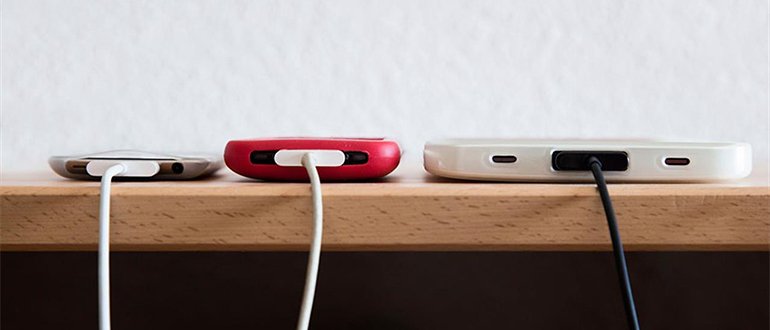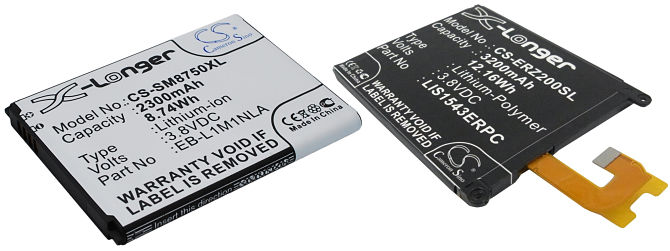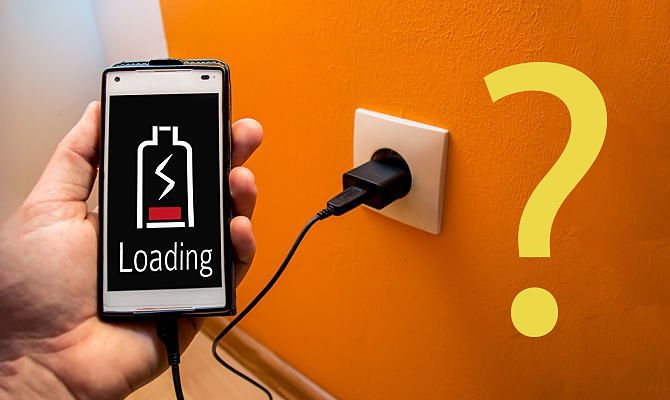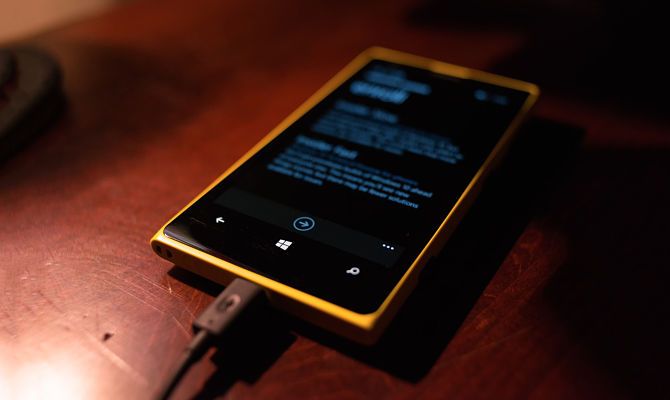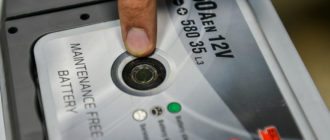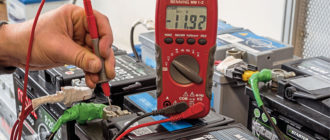A modern mobile device, in addition to its initial purpose - a means of communication - performs many other functions. This includes Internet access, a photo and video camera, the ability to watch movies, listen to music and play games and much more. Therefore, the batteries of such devices often have to be charged. How to do it right to extend battery life and increase its resource?
Content
Types of Phone Batteries
Modern smartphones use lithium-ion (li-ion) and lithium-polymer (li-pol) batteries. Lithium-ion replaced its predecessors - nickel-cadmium and nickel-metal hydride - and surpassed them in many ways. However, during the operation, their shortcomings were discovered. Lithium electrodes were unstable. Therefore, in pure form, this material is no longer used, replacing various compounds. The resulting batteries met all the requirements, and therefore firmly occupied their niche.
Also, modern smartphones use lithium-polymer batteries. It uses the principle of the transition of polymers into a semiconductor. Electrolyte ions are introduced into polymers, this improves conductivity.
To date, these types of batteries are produced:
- polymer electrolytes with lithium salts embedded in them;
- polymer-based dry electrolytes;
- microporous matrices where non-aqueous solutions of lithium salts are embedded.
Development in this direction is ongoing to this day, so the technology continues to improve.
Older phones typically use nickel-cadmium and nickel-metal hydride.
How to properly charge a new smartphone battery
Many have heard that the new battery needs to be charged in a special way, otherwise it will fail faster. But if the battery is non-removable, then it will not be easy to replace it.
A brand new battery is recommended to "swing". Here is what you need for this:
- Discharge the battery completely to zero. No need to do this on purpose, tormenting the smartphone in all ways - let the discharge happen gradually, during normal use. The main thing is that it be complete.
- Then put the device on charge. You need to look in the manual to it, how long it takes a full cycle of charge and discharge, and throw a couple of hours by the time of battery recovery.
- After fully charging, use the phone as usual, but again, wait until it is completely discharged, repeat the procedure. And so - 3-4 times. This increases the battery life, allows it to last longer.
Important! Such a “buildup” is acceptable only for new smartphones, if the device has been in operation for a long time, then the reception can, on the contrary, do much harm.
How to charge a new phone with a li-ion battery
There are some nuances here. Lithium-ion batteries are not very good at full charge. Therefore, even at the very beginning of operation it is not worth abusing the “buildup”, limiting it 2-3 times. In the future, the battery charge should be kept within 20-80%, you should not allow it to completely discharge, as well as keep it plugged in all the time. It will be optimal not to let the battery charge to the end, leaving a charge at the level of 90-95%.
How to charge a new smartphone with li-pol battery
Li-polymer batteries do not like deep discharge at all. Manufacturers recommend the first few times to fully charge the battery, but in this case it is better not to bring it to zero. With an indicator of 10-15 percent, it is already worth connecting the device to the mains. In the future, it is recommended to recharge it at any convenient opportunity - in small portions.
There are different opinions about whether a new phone should be completely discharged and charged. On the one hand, li-ion and li-pol do not have a memory effect, which makes no sense. On the other hand, an inhibitor is added to the battery during production, which should extend the life of the battery, and it is during the first charge-discharges that it is destroyed, which allows you to achieve maximum life and capacity.
How to extend the battery life of your phone
Different batteries require a different approach, but there are general rules that should be followed for all types of batteries in order to extend their service life:
- It is worth using only “native” charging - when it reaches full charge, it stops supplying power to it, even if you do not disconnect it from the network. Therefore, recharging will not happen in any case. Using someone else's charge can spoil the battery. “Native” memory devices also meet all the requirements regarding this particular model: voltage, output current, power.
- It is necessary to maintain the optimum temperature both during operation and during storage of the smartphone. This room temperature. Both overheating and overcooling, as well as a sharp change in temperature, harm the device equally.
- If no one will use a mobile device for a long time, then you should not fully charge it before it, as well as discharge it to zero. This will damage the battery. It will be best to turn off and remove the phone at a charge level of about 50%.
Next - the nuances of operating different types of batteries.
How to charge a smartphone with a li-ion battery
Lithium-ion batteries do not like full discharge (with the exception of calibration) and overcharging. It is optimal to maintain a charge level between 20 and 90%.
You can charge in different ways:
- Regular charger. Its characteristics are optimal, therefore it is advisable to use it. Only in the absence of such an opportunity to resort to other methods.
- While working at a computer, you can at the same time connect a mobile device to it and recharge it. However, this will take much longer than charging through a wall outlet.
- Cigarette lighter in the car. It is convenient for those who are driving, but the process may also not be fast - depending on the parameters of the device.
- Universal memory. Such a device in common people is called a “frog”. Suitable for different types of batteries.
Once every three months, a charge calibration is recommended. It involves a complete discharge followed by a full charge.
How to charge a phone with a li-pol battery
Lithium-polymer batteries do not like overdischarge and one hundred percent charge. It is better to keep it in the range from 20 to 90%, when this indicator is reached, disconnect from the network. If, after discharging, you still missed the moment and the device turned off, you do not need to keep it in this state, but you should immediately put it on charge.
With lithium-polymer batteries, you should not be afraid of recharging too often - on the contrary, you need to do this at any convenient opportunity in small portions. The main thing is not to keep charging for several hours and not reach 100% of the scale.
Being permanently connected to the electrical network is harmful to such a battery. The controller built into the charger will disconnect it from charging at the right time, however, heat will continue to flow. This harms the lithium polymer battery.
All batteries have a built-in controller that controls the charge and discharge process.That is, when the battery is discharged to zero, there is still a certain amount of charge, and when it reaches 100%, the controller stops letting current into the battery as soon as the charge level drops to 99%, the voltage goes back.

How to charge a phone with a ni-mh battery
Nickel metal hydride (ni-mh) batteries are less durable than modern ion batteries. And also they have a memory effect. That is, the battery “remembers” to what state its charge reached before, and begins to discharge faster.
To prevent this from happening, such batteries need to be “trained": periodically completely discharge, and then fully charge. This allows you to increase capacity by an average of 5%.
What is not allowed when charging the phone battery
All batteries, without exception, do not tolerate:
- hypothermia;
- overheating;
- bumps and other physical damage;
- a sharp change in temperature;
- the use of non-native memory;
- permanent connection to the mains.
Depending on the type, they also have some other “addictions”.
With li-ion battery
With a battery of this type, the following cannot be allowed:
- frequent complete discharge;
- constant 100% charge;
- discharged storage;
- charge calibration too frequent;
- overheating and hypothermia.
It’s better to maintain a battery charge of up to 90%, and once a few months arrange a “training”, and everything will be fine.
With li-pol battery
With a battery of this type, the following cannot be allowed:
- full discharge;
- training or calibration;
- full charge;
- permanent connection to the mains;
- overheating and hypothermia.
As with li-on, the optimal charge will be in the range from 20 to 90%.
With ni-mh battery
With a battery of this type, the following cannot be allowed:
- recharge;
- frequent charge "a little bit";
- storage in a fully charged or fully discharged form;
- overheat.
In order not to lose the capacity of such a phone, it is recommended to charge it completely, and discharge it as much as possible. Periodically "train."
Video: How to properly charge the phone battery
Conclusion
It should be understood that whether you have an Android, iPhone or an old black and white mobile phone, none of these devices can live forever. Aging and battery failure is an inevitable process. However, proper handling can slow it down and extend the life of the mobile device.
Have questions or have something to add? Then write to us about it in the comments, this will make the material more useful, complete and accurate.

